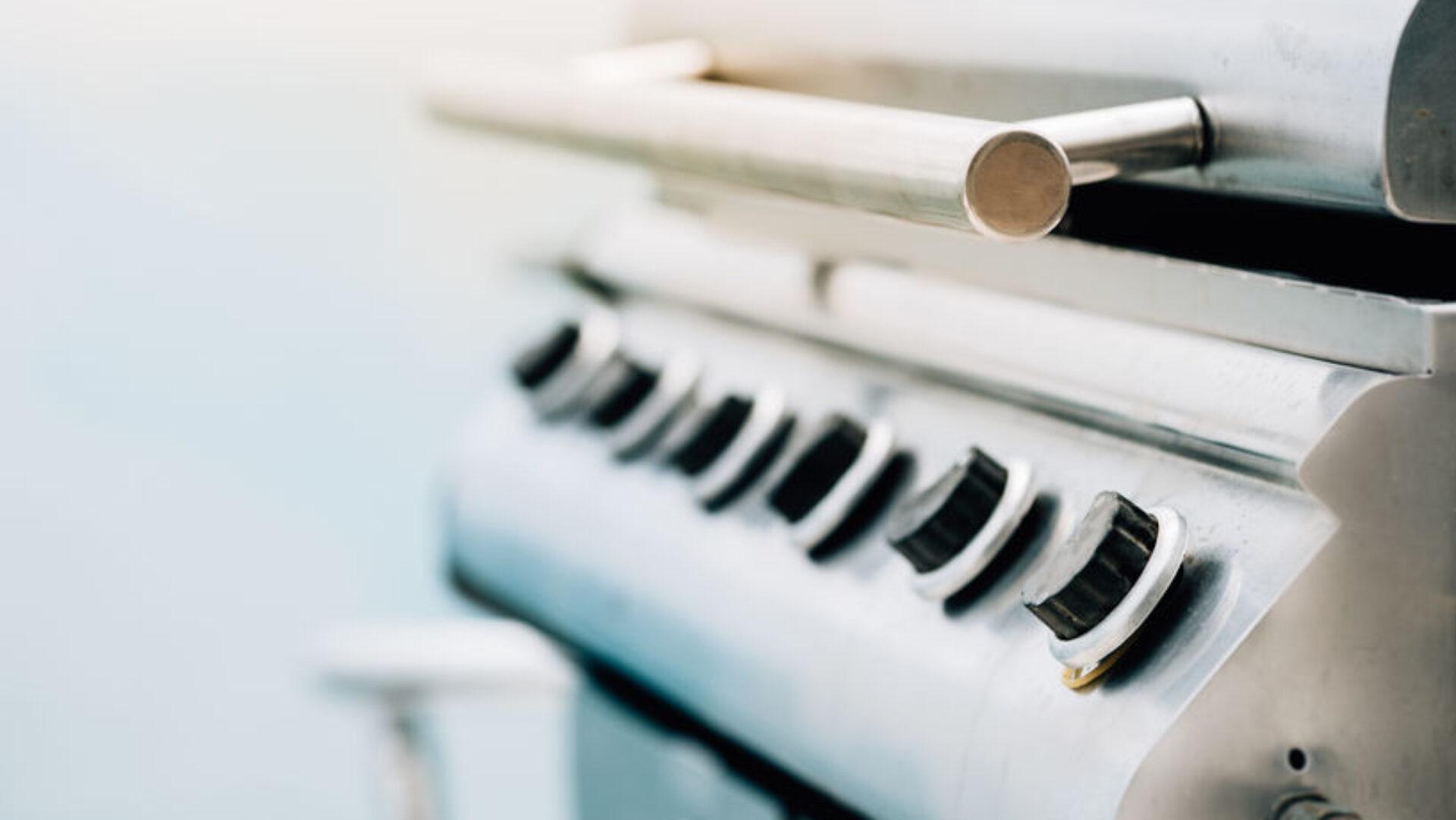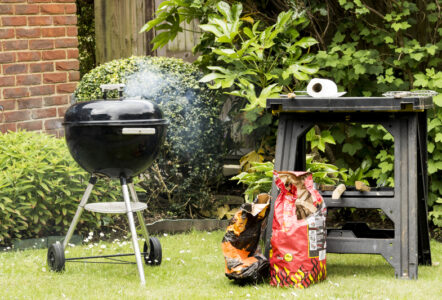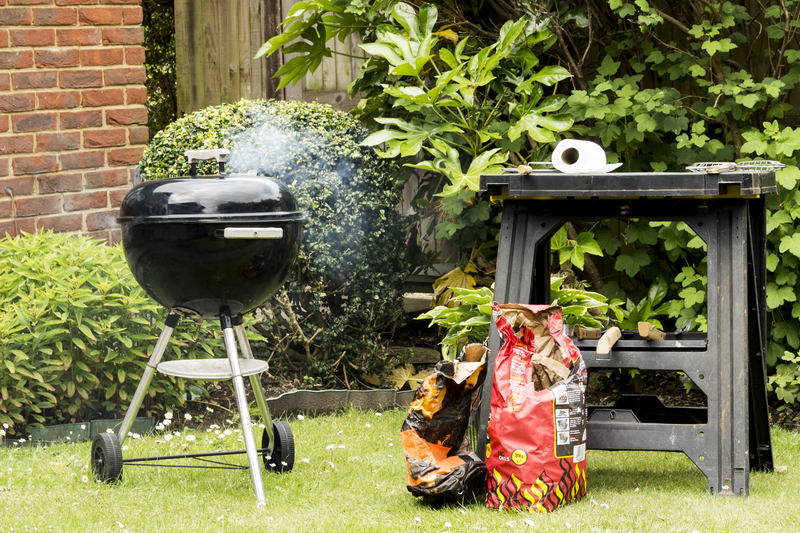
When it comes to grilling, choosing the right charcoal can significantly enhance the flavor and experience of cooking.
The market offers various types of charcoal, each with unique properties and benefits.
For the best grilling results, hardwood lump charcoal and high-quality briquettes stand out as top choices.
Hardwood lump charcoal burns hotter and cleaner, providing a rich, smoky flavor that many grilling enthusiasts prefer.
On the other hand, briquettes offer a more consistent burn and are often easier to manage, making them ideal for long cooking sessions.
Understanding the differences between these charcoals will help anyone select the right option for their grilling needs.
Exploring the options available is key to mastering the art of grilling.
Knowing which charcoal suits specific cooking styles can elevate barbecue outcomes, ensuring every meal is a success.
Types of Charcoal for Grilling

Different types of charcoal can significantly impact the grilling experience.
Each type has unique characteristics regarding heat, flavor, and burn time.
Below are detailed descriptions of the main types of charcoal.
Lump Charcoal
Lump charcoal consists of charred wood pieces without additives.
It ignites quickly and burns hotter than briquettes, reaching temperatures of 1,200°F or more.
This type of charcoal produces minimal ash, making cleanup easier.
Lump charcoal is ideal for grilling meats and vegetables, offering a natural wood flavor.
It comes in various sizes, and larger pieces provide longer burn times, while smaller pieces light faster.
Users appreciate its clean-burning properties, as it contains no chemicals or fillers.
Charcoal Briquettes
Charcoal briquettes are made from compressed sawdust, coal, and binders.
They provide a consistent burn and are typically more affordable than lump charcoal.
Their average burn time can range from 4 to 6 hours, depending on the brand.
While briquettes are convenient, they may contain additives that can affect taste.
Some manufacturers offer natural briquettes that avoid these fillers.
This type is suitable for slow-cooked meats and foods that benefit from long, even heating, like ribs or whole chickens.
Hardwood Lump Charcoal
Hardwood lump charcoal is sourced from specific hardwoods, such as oak, hickory, and mesquite.
It burns hotter and cleaner than regular lump charcoal.
The unique wood types contribute distinctive flavors, making it a popular choice among barbecue enthusiasts.
Due to its natural composition, hardwood lump charcoal produces less smoke and ash.
This type is often preferred for high-heat grilling and smoking.
Each wood type imparts different flavor profiles, offering versatility for various grilling techniques.
Binchotan Charcoal
Binchotan charcoal is a traditional Japanese charcoal made from oak.
It undergoes a unique process that creates a dense, high-quality material.
Binchotan burns longer and hotter than most other charcoals, often exceeding 1,000°F.
This charcoal is prized for its purifying properties, often used in cooking and water purification.
It does not produce smoke or odor, making it suitable for grilling delicate foods like fish.
Its long burn time makes it efficient, though it is typically more expensive than other options.
Flavored Briquettes
Flavored briquettes are designed to enhance the taste of grilled foods.
They are often infused with various woods or seasonings, such as hickory, applewood, or mesquite.
These briquettes add subtle flavors during cooking, allowing users to experiment with different taste profiles.
While they offer convenience, the flavors depend on the quality and ingredients used.
Flavored briquettes may contain additives, so checking product labels for natural options is important.
They are especially suitable for meats and can elevate standard grilling sessions into flavorful experiences.
Choosing the Best Charcoal
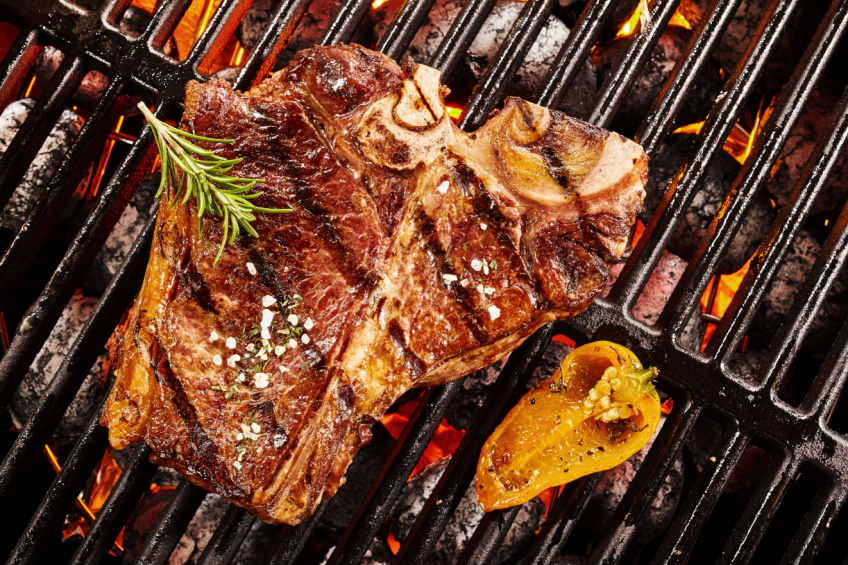
Selecting the right charcoal is essential for achieving optimal grilling results.
Factors such as heat retention, burn time, flavor, and compatibility with various grill types play a crucial role in this process.
Heat Retention and Distribution
Heat retention is critical for consistent cooking.
Higher-quality charcoals, like lump charcoal, provide excellent heat retention, allowing for long cooking sessions.
They maintain heat, which is essential for high-heat cooking techniques.
Another important aspect is heat distribution.
Charcoal that burns evenly ensures a stable cooking temperature.
This is particularly beneficial for kamado-style grills, which rely on direct and indirect heat for versatile cooking options.
For even better performance, consider a mix of briquettes and lump charcoal.
This combination maximizes both heat retention and distribution.
Burn Time and Temperature Control
Burn time directly affects how long the grill can maintain heat.
Briquettes typically offer longer burn times than lump charcoal, making them suitable for longer grilling sessions.
Temperature control is also vital.
Charcoal that can reach high temperatures while allowing for adjustments can help achieve the desired results.
Briquettes often provide steady, moderate heat, while lump charcoal can reach higher temperatures quickly.
Grillers should consider their cooking style when choosing charcoal.
Each type has unique properties suited for different grilling techniques, whether for quick searing or slow cooking.
Flavor Profile
The flavor produced by charcoal significantly influences the final taste of grilled food.
Lump charcoal, made from natural hardwood, imparts a rich, smoky flavor that enhances meats and vegetables alike.
On the other hand, briquettes might include additives that can affect flavor.
Some brands offer natural options that eliminate unwanted tastes.
For those seeking specific flavor profiles, using flavored briquettes infused with wood chips can provide additional layers of taste.
Options such as hickory or mesquite can complement various dishes.
Grill Compatibility
Compatibility between the charcoal and grill type is crucial for optimal performance.
Kamado-style grills benefit from lump charcoal because of its high heat retention and efficiency, ideal for both high-heat cooking and low-and-slow methods.
Gas and electric grills typically do not use charcoal, so compatibility with traditional charcoal grills is essential.
For traditional kettle or barrel grills, briquettes offer consistent results and are easier to manage.
Always check the manufacturer’s specifications for recommendations on charcoal types.
This will ensure the grill operates efficiently without compromising flavor or cooking quality.
Charcoal Grilling Techniques
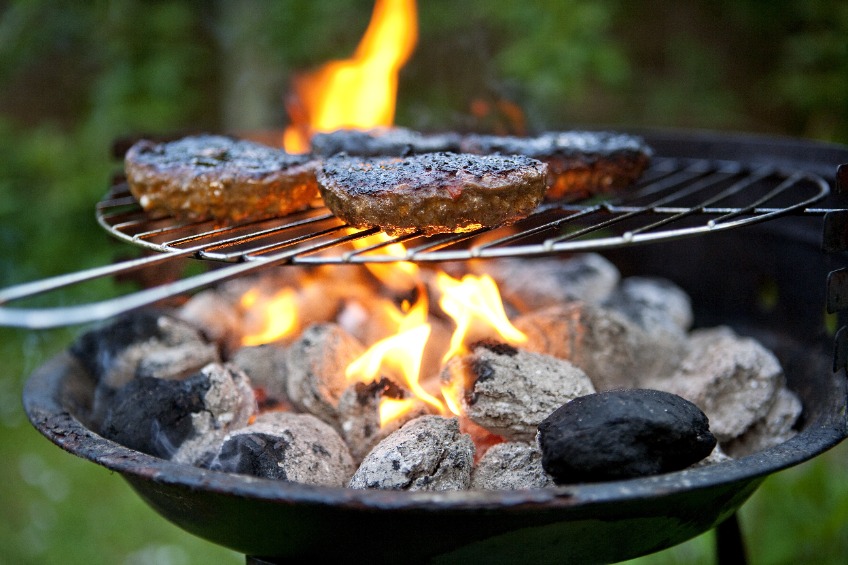
Different techniques enhance the quality of charcoal grilling, allowing for various cooking styles.
Understanding these methods can improve the grilling experience and achieve flavorful results.
Direct vs. Indirect Heat
Direct heat involves placing the food directly over the coals.
This method is ideal for cooking items that require high temperatures, such as steak and burgers.
The intense heat sears the exterior, locking in moisture and flavor.
Indirect heat, on the other hand, refers to cooking food away from the coals.
This technique is suitable for larger cuts of meat, like roasts or whole chickens.
It allows for slower cooking without burning the outside, delivering tender and juicy results.
A combination of both methods can also be effective.
For instance, grilling a steak over direct heat for a sear, followed by indirect heat to finish cooking, achieves the best of both worlds.
Two-Zone Cooking
Two-zone cooking creates distinct heat areas on the grill.
One side has direct heat, while the other features indirect heat.
This setup offers versatility for various grilling needs.
Grillers can start cooking on the hot side for searing, then move food to the cooler side to finish cooking.
This method is effective for foods that need longer cooking times or for those that require different levels of doneness.
Using a two-zone setup can also facilitate complex grilling.
For instance, it allows for cooking vegetables alongside meats at precise temperatures without overcooking.
Low-and-Slow Cooking
Low-and-slow cooking is a technique that maintains a low temperature for an extended period.
This method is perfect for tough cuts of meat, such as brisket or ribs, which require long cooking times to break down connective tissues.
Typically, this approach uses indirect heat with the grill lid closed to create a stable cooking environment.
This method can take several hours but results in exceptionally tender and flavor-infused dishes.
Adding wood chips can enhance the smoky flavor during low-and-slow cooking.
This technique is ideal for those looking to infuse their meats with rich, deep flavors.
High-Heat Grilling
High-heat grilling is effective for achieving caramelization and rich flavors on meats and vegetables.
This method utilizes the intense heat generated by charcoal to create a seared crust.
Cooking at high temperatures is suited for foods that cook quickly, such as shrimp, fish, or thin cuts of meat.
Timing is crucial, as cooking anything too long can result in dryness.
To ensure safety and quality, it’s essential to monitor the cooking area closely.
Keeping a close eye on food can prevent flare-ups and burning while allowing for delicious, well-cooked meals.
Grill Features and Maintenance
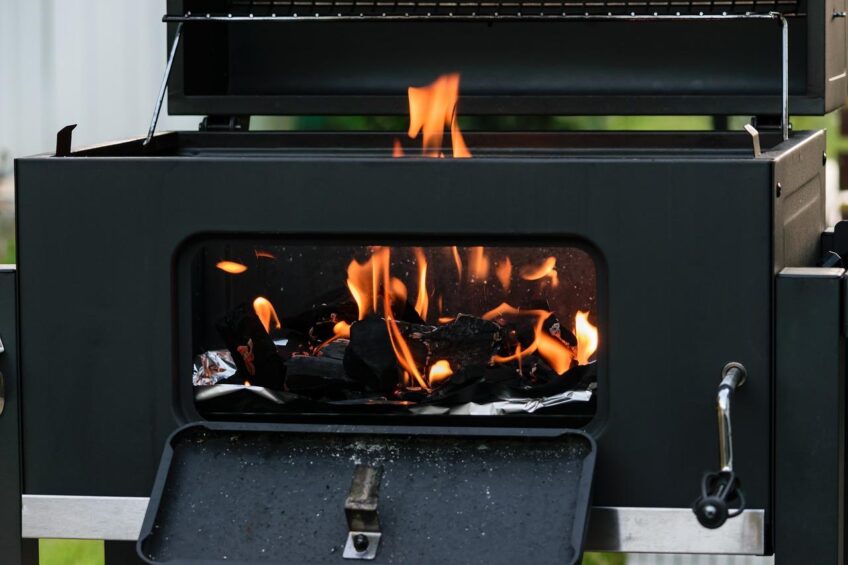
Understanding the features and maintenance practices of a grill is essential for optimal grilling performance.
Key areas include airflow control, regular cleaning, proper charcoal storage, and potential enhancements to improve the grilling experience.
Airflow Control
Airflow control is crucial for managing temperature and cooking time.
Many grills come with adjustable dampers, allowing users to regulate oxygen flow.
By increasing airflow, the temperature rises, while reducing it cools down the fire.
Kamado-style grills often include multiple dampers for precise control.
The cooking grate’s position can also affect airflow, so it’s important to monitor how grates are arranged.
Ventilation prevents charcoal from burning out too quickly, ensuring a consistent grilling experience.
Cleaning and Upkeep
Regular cleaning is vital for maintaining grill performance.
After each use, it’s best to clean the cooking grate with a wire brush to remove residue.
A charcoal tray with easy access simplifies cleanup, making it easier to discard ash and leftover charcoal.
Once a month, deeper maintenance ensures longevity. Users should inspect and clean the interior, checking for grease buildup.
Removing debris from the burners or vents enhances safety and efficiency.
Regularly cleaning the grill extends its life and ensures flavors remain untainted.
Charcoal Storage
Proper charcoal storage impacts the quality and burn of the fuel.
Charcoal should be kept in a dry, cool place, ideally in airtight containers to avoid moisture absorption.
Damp charcoal can lead to uneven burning, affecting cooking time and flavor.
Portable grill users should consider compact storage solutions that maintain fuel integrity.
Keeping charcoal away from direct sunlight prevents degradation of the briquettes or lump charcoal.
Good storage practices lead to better performance when grilling.
Grill Enhancements
Enhancements can elevate the grilling experience significantly.
Some grills are equipped with a built-in thermometer, allowing users to monitor internal temperatures accurately.
This feature aids in achieving desired doneness for various meats.
Adding adjustable grates provides versatility for different cooking styles.
It enables balancing heat across the surface, making it easier to sear or slow-cook food.
For backyard grills, accessories like smoke boxes or rotisserie kits can enhance flavor profiles, while also making meals more dynamic.
Accessories for Charcoal Grilling

To enhance the charcoal grilling experience, several key accessories can make the process more efficient and enjoyable.
These tools improve safety, convenience, and control over cooking temperatures.
Chimney Starters
A chimney starter is essential for any charcoal grilling setup.
It allows a user to light charcoal quickly and evenly.
By using a chimney, one can achieve better uniformity without relying heavily on lighter fluids.
To use a chimney starter, fill the top part with charcoal and place crumpled newspaper or fire starters in the bottom section.
Once lit, the heat rises, igniting the charcoal efficiently.
Look for options like the Weber Rapidfire Chimney Starter or Kingsford Original Chimney Starter for reliable performance.
These starters eliminate guesswork, ensuring the grill reaches optimal temperature faster.
Grilling Tools
 Investing in quality grilling tools is crucial for successful charcoal grilling.
Investing in quality grilling tools is crucial for successful charcoal grilling.
Key items include long-handled tongs, spatulas, and grill brushes.
Long-handled tongs are important for safely flipping meat and vegetables without getting too close to the heat.
A sturdy grill brush is necessary for maintaining a clean grill surface.
The bristles should be tough enough to remove residue without damaging the grates.
Tools made with heat-resistant materials add durability and safety to the grilling process.
Additionally, a grill basket can hold smaller items securely during cooking.
Thermometers and Gauges
Monitoring temperature is vital for cooking meats thoroughly and safely.
A reliable instant-read thermometer provides accurate readings, ensuring that meats reach the correct internal temperature.
This accessory prevents undercooking and overcooking, both of which can ruin meals.
 Consider using a wireless digital thermometer like this ThermoPro TP829 for convenience.
Consider using a wireless digital thermometer like this ThermoPro TP829 for convenience.
This allows a user to monitor temperatures from a distance, making multitasking easier while grilling.
Additionally, some charcoal grills come equipped with built-in temperature gauges, which help keep track of internal heat without lifting the lid.
Charcoal vs. Gas and Other Grills

When considering grilling options, distinguishing between charcoal and gas grills is essential for making informed choices.
Each grill type offers unique advantages that cater to different preferences regarding flavor, convenience, and cooking versatility.
Taste and Authenticity
Charcoal grills are renowned for imparting a distinct, smoky flavor characteristic of traditional grilling.
The high heat from burning charcoal results in a well-seared exterior while allowing the inside to remain juicy.
This cooking method is particularly favored for barbecue enthusiasts who appreciate the authentic experience.
In contrast, gas grills create a cleaner taste.
While they can achieve high temperatures quickly, they generally lack the deep, rich flavor provided by charcoal.
Additional wood chips can be added to gas models to enhance smokiness, though this may not compare to the depth of flavor from charcoal.
Convenience and Speed
Gas grills shine in terms of convenience and speed.
They heat up rapidly—often within ten minutes—making them ideal for quick meals and spontaneous grilling sessions.
The flame control is straightforward, allowing for precise temperature adjustments.
Charcoal grills demand more time and effort for initial setup and lighting.
Users typically require at least 20-30 minutes to achieve optimal cooking temperatures.
Additionally, managing the heat can be less straightforward as it relies on the arrangement and quantity of charcoal used.
Versatility in Cooking
Charcoal grills offer remarkable versatility in cooking styles.
They are suitable for direct and indirect grilling, giving users the option to sear meats swiftly or cook slower and at lower temperatures.
Conversely, gas grills provide similar versatility but may include features like integrated side burners or rotisserie attachments.
Pellet grills, another option, use compressed wood pellets that provide both fuel and flavor.
They can mimic the flavors of charcoal grilling while offering ease of use similar to gas models.
Cost Considerations
Cost plays a significant role in choosing between grill types.
Charcoal grills generally require a lower initial investment compared to gas grills, often appealing to budget-conscious buyers.
However, charcoal and wood fuel costs can add up over time.
Gas grills tend to be pricier upfront, especially models with advanced features or higher BTU outputs.
Maintenance and propane refills also contribute to long-term costs.
Moreover, pellet grills can be the most expensive option but offer unique flavor experiences and convenience that may justify the investment for serious grillers.
